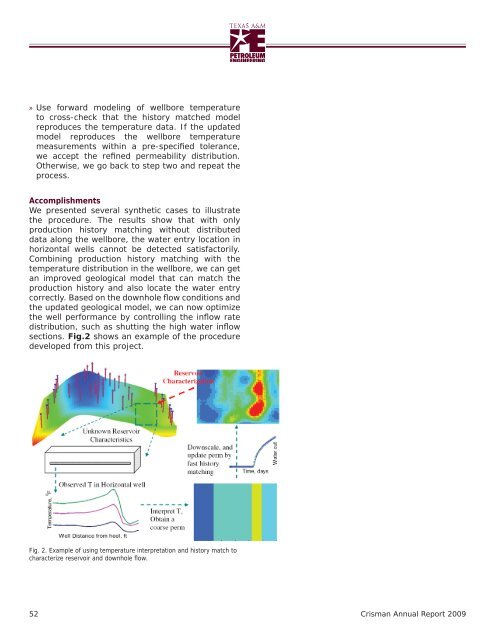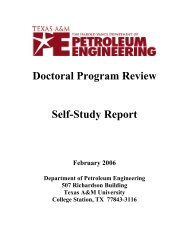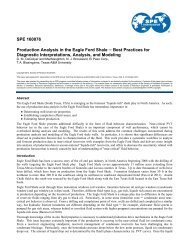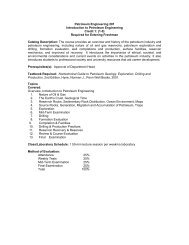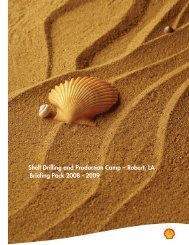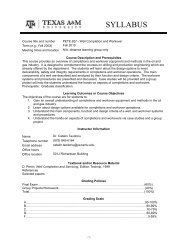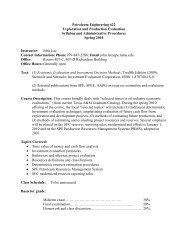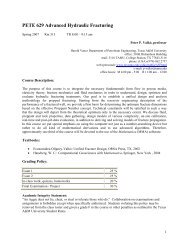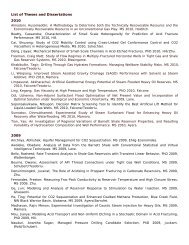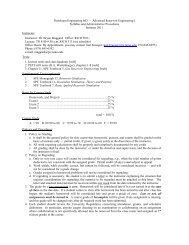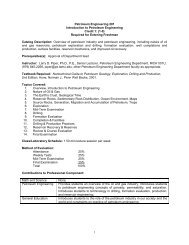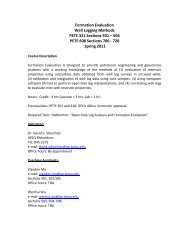Crisman Annual Report 2009 - Harold Vance Department of ...
Crisman Annual Report 2009 - Harold Vance Department of ...
Crisman Annual Report 2009 - Harold Vance Department of ...
You also want an ePaper? Increase the reach of your titles
YUMPU automatically turns print PDFs into web optimized ePapers that Google loves.
» Use forward modeling <strong>of</strong> wellbore temperature<br />
to cross-check that the history matched model<br />
reproduces the temperature data. If the updated<br />
model reproduces the wellbore temperature<br />
measurements within a pre-specified tolerance,<br />
we accept the refined permeability distribution.<br />
Otherwise, we go back to step two and repeat the<br />
process.<br />
Accomplishments<br />
We presented several synthetic cases to illustrate<br />
the procedure. The results show that with only<br />
production history matching without distributed<br />
data along the wellbore, the water entry location in<br />
horizontal wells cannot be detected satisfactorily.<br />
Combining production history matching with the<br />
temperature distribution in the wellbore, we can get<br />
an improved geological model that can match the<br />
production history and also locate the water entry<br />
correctly. Based on the downhole flow conditions and<br />
the updated geological model, we can now optimize<br />
the well performance by controlling the inflow rate<br />
distribution, such as shutting the high water inflow<br />
sections. Fig.2 shows an example <strong>of</strong> the procedure<br />
developed from this project.<br />
Fig. 2. Example <strong>of</strong> using temperature interpretation and history match to<br />
characterize reservoir and downhole flow.<br />
52<br />
<strong>Crisman</strong> <strong>Annual</strong> <strong>Report</strong> <strong>2009</strong>


